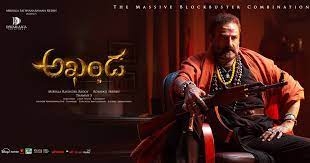Here are my Top Five Books of 2024 - a must-read!
1. The Golden Road by William Dalrymple
2. The Seven Deadly Sins: The Biology of Being Human by Guy Leschziner
3. The Health and Wealth Paradox: How to Use First Principles Thinking to Achieve Both by Ankush Datar and Mihir Patki
4. The Stoic’s Guide to Life by Rasha Barrage
5. Money, GPT, AI and the Threat to the Global Economy by James Rickards.
About each Book in brief
1. The Golden Road by William Dalrymple
After facing previously backlash for over-emphasizing on the Silk Road which may have emboldened China to launch the Belt and Road Initiative in 2013, William Dalrymple comes back to India to weave a fascinating narrative about how India was once the center of the world and traded more with Rome as well as with so many other parts of the globe that in today’s parlance would amount to spectacular multilateralism – and in ways that made “Indosphere” the most influential sphere of World Economy. Whether or not you are an Indophile, this book gives you epic proof of what was once, along with China, the center of the world trade. Sure to become an instant classic.
2. The Seven Deadly Sins by Guy Leschziner
It takes a professor of neurology and sleep medicine to have a deep look at the seven deadly sins that create certain medical disorders which are posing a challenge to the medical world. With cutting-edge science and examples from real patients, Leschziner’s book takes us on a fascinating journey of how our bodies and brains are wired and how the seven sins not only represent our moral failings but also simply human functions that aid us in life or by hardwiring prevent some functions in humans. In no particular order, you can read about these seven deadly sins, viz., Greed, Sloth, Gluttony, Pride, Envy, Lust and Anger. A 373 page-turner.
3. The Health And Wealth Paradox: How to Use First Principles Thinking to Achieve Both by Ankush Datar and Mihir Patki
Two Twitter/X market watchers meet serendipitously and collaborate on what is the most improbable topic that’s a heady combination of Health and Wealth. Most books on these topics do not meet at the intersection of health and wealth but the book above talks about a unique set of first principles deeply embedded in health and wealth which can be applied to both. What is the connection between Ketogenic diet and Value Investing? Or, looking at FSSAI labels on food products and trading on the Derivatives market? How can you apply the power of compounding in equities principle to your fitness journey? With extensive research and latest findings, these two authors condense with fascinating detail and simplicity on the first principles that make up your health and wealth with humbling anecdotes from their personal lives. Twelve chapters and many principles highlighted in each chapter with neat summaries at the end. One of the surprisingly delightful reads of 2024 released in the last quarter.
4. The Stoic’s Guide to Life by Rasha Barrage
Stoicism has been populating bookshelves over the last decade as the essential philosophy of life and living ever since authors like Robert Greene, Ryan Holiday and Darius Foroux have been exploring the many facets of Stoic philosophy and the timeless wisdom on the art of living. Most Stoic books have become voluminous and more condescending than a web series on Netflix with daily reminders, introductions and diarized jottings on everything from fatherhood to war and wealth. This book is the shortest introduction you will ever get on the topic to get started off on this philosophy of 2,300 years. It starts with an introduction on the philosophy from the men who shaped and improvised on stoicism from Zeno to Seneca to Epictetus to Marcus Aurelius. It takes you off on the virtues propitiated with each father-figure into concise chapters on wisdom, courage, temperance and justice and concludes how to blend all of them in our lives. As a philosophy that’s now spreading faster than crypto craze, this book released in 2024 is one of the shortest and inspirational tome that fits in your pocket.
5. Money, GPT, AI and The Threat to The Global Economy by James Rickards
James Rickards is the author who always comes with prescient observations on aspects of world economy which create tectonic shifts and disrupt the status-quo. Most of his previous books like Currency Wars, The Aftermath and The Road to Ruin covered areas whose repercussion are still being felt by forces that shape our markets and economies – they could be trade wars, currency manipulations, or reckless central banking policies. He has earlier touched upon the crypto currencies in The Death of Money. In the above book, he follows up on the most important force that is disrupting our work lives and our world as we know. Taking an example of how a popular magazine “Foreign Policy” published two essays on a geopolitical theme earlier, one by AI and another by a reputed professor, the author builds a good premise of how AI is not fool proof, not a maven, and no motives and therefore builds a case of how excessive reliance on ChatGPT or its many Avatars should not fool us in trivializing the human ingenuity or capabilities. Like Henry Kissinger’s “Genesis” released posthumously this year, James Rickards’ new book is a readable treatise on the pitfalls one should stay clear in the AI overload. He later concludes that traditional asset classes like gold and silver ought to weigh a third of the portfolio representing tangible nondigital assets. With extensive bibliography, this book takes the cake in being the last word on the phenomena of the last few years – ChatGPT, AI and Money in that order!









